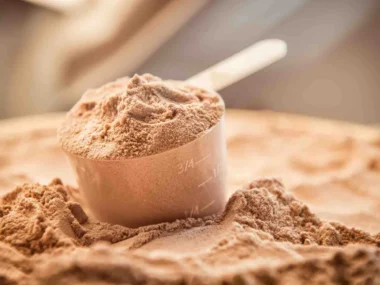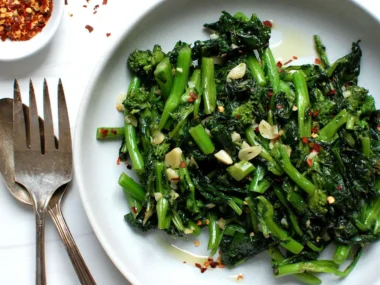Glass noodles, also known as cellophane or bean thread noodles, are a popular choice in many Asian dishes. They are made from starches like mung beans, yams, or sweet potatoes and have a transparent appearance when cooked. These noodles are loved for their light, chewy texture and their ability to soak up the flavors of whatever they’re cooked with.
However, there are times when you might not have glass noodles on hand or perhaps you’re looking for a different option to try in your recipes. Luckily, there are several other noodles and ingredients that can be used as substitutes while still delivering a satisfying dish.
Whether you need a replacement for dietary reasons, availability, or just a change of taste, there are many alternatives that can fit well in recipes where glass noodles are traditionally used. Each substitute comes with its own unique texture and flavor, which might slightly change the dish but still make it delicious.
In this article, we’ll look at 10 different substitutes for glass noodles. We’ll look into what they are, how they compare to glass noodles, and why they might be a good choice for your next meal.
10 Substitute For Glass Noodles
1. Rice Noodles

Rice noodles are one of the most common substitutes for glass noodles. They are made from rice flour and water, which gives them a white, semi-transparent appearance when cooked. Rice noodles are widely available in various thicknesses, from thin vermicelli to wide flat noodles. They have a similar chewy texture to glass noodles, though they tend to be a bit softer and less slippery.
Rice noodles absorb sauces and flavors well, making them a great option in stir-fries, soups, and salads. They cook quickly, usually in just a few minutes, and can be found in most grocery stores, often in the Asian food aisle. If you’re looking for a substitute that is easy to find and cooks up quickly, rice noodles are a solid choice.
2. Shirataki Noodles

Shirataki noodles, sometimes called “miracle noodles,” are another excellent substitute. Made from the konjac yam, these noodles are extremely low in calories and carbohydrates, making them popular among those following low-carb or ketogenic diets. Shirataki noodles have a very similar appearance to glass noodles, as they are also transparent and have a slightly gelatinous texture.
However, they have a firmer bite and don’t absorb flavors as easily as glass noodles do. These noodles usually come pre-cooked and packed in water, so they require only a quick rinse and brief heating before they’re ready to use. Their low calorie content and unique texture make them an interesting alternative to glass noodles, especially for those looking to reduce their calorie intake.
3. Zucchini Noodles

Zucchini noodles, or “zoodles,” are another alternative for those seeking a healthier option. Made by spiralizing fresh zucchini, these noodles are entirely vegetable-based and bring a fresh, green flavor to any dish. Zucchini noodles have a much softer texture compared to glass noodles, especially if they are lightly cooked, but they can still hold up well in stir-fries or salads.
Since they are made from a vegetable, they do not have the same neutral taste as glass noodles and will add a slight zucchini flavor to your dish. Zucchini noodles are a great substitute if you’re looking to increase your vegetable intake or try a gluten-free option. They are also easy to make at home with a spiralizer or can be purchased pre-cut from many supermarkets.
4. Sweet Potato Noodles

Sweet potato noodles, also known as “dangmyeon” in Korean cuisine, are another excellent substitute for glass noodles. These noodles are made from sweet potato starch, which gives them a similar transparent appearance and chewy texture. Sweet potato noodles are slightly thicker than glass noodles and have a bit more of a bouncy texture when cooked.
They are commonly used in Korean dishes like Japchae, where they absorb the flavors of soy sauce, garlic, and sesame oil beautifully. If you enjoy the chewy texture of glass noodles but are looking for something with a slightly different flavor, sweet potato noodles are a great option. They can be found in Asian grocery stores or online.
5. Vermicelli Noodles

Vermicelli noodles, made from rice or wheat flour, can also serve as a substitute for glass noodles. Rice vermicelli is the closer match, with its fine, thin strands and translucent appearance when cooked. These noodles are very soft and light, making them a good choice for soups, salads, and spring rolls. Wheat vermicelli, on the other hand, is a bit sturdier and less transparent, but it can still work well in many recipes that call for glass noodles.
Both types of vermicelli are quick to cook and widely available, making them a convenient substitute. The texture is slightly different, with rice vermicelli being more delicate and wheat vermicelli offering a bit more bite, but both can effectively replace glass noodles in many dishes.
6. Soba Noodles

Soba noodles are another alternative worth considering. Made from buckwheat, these Japanese noodles have a distinct, earthy flavor and a firm texture. Soba noodles are not transparent like glass noodles; instead, they have a brownish color. Their firmer texture and stronger flavor mean they won’t replicate glass noodles exactly, but they can still work well in many dishes.
Soba noodles are traditionally served cold in salads or hot in broths, but they can also be stir-fried or used in soups. If you’re open to trying something a bit different, soba noodles can be an interesting substitute for glass noodles.
7. Spaghetti
:max_bytes(150000):strip_icc()/Easyspaghettiwithtomatosauce_11715_DDMFS_1x2_2425-c67720e4ea884f22a852f0bb84a87a80.jpg)
Spaghetti might not be the first thing that comes to mind when looking for a glass noodle substitute, but it can work in a pinch. Traditional wheat-based spaghetti has a different texture and taste, being thicker and more al dente compared to the soft, chewy nature of glass noodles.
However, in recipes where the noodle texture isn’t the main focus, spaghetti can be a suitable stand-in. It works especially well in stir-fries or soups where it can absorb the flavors of the sauce or broth. While it won’t provide the same lightness as glass noodles, it’s a common pantry item that can save you a trip to the store.
8. Cellophane Noodles

Cellophane noodles made from different starches like yam or cassava can also be used as substitutes. These noodles are very similar to traditional glass noodles but might have a slightly different texture depending on the starch used. They are transparent and chewy, making them an excellent stand-in for glass noodles in most dishes.
They absorb flavors well and can be used in soups, salads, and stir-fries just like glass noodles. If you come across cellophane noodles made from different starches, they can be a versatile and almost identical substitute for glass noodles.
9. Mung Bean Noodles

Mung bean noodles, which are sometimes used to make glass noodles, can be used in their original form as well. These noodles are made from mung bean starch and have a chewy texture that is quite similar to that of glass noodles.
Mung bean noodles are typically thin and can be used in soups, salads, and stir-fries. They cook quickly and absorb flavors well, making them a versatile choice. If you can find mung bean noodles, they are an excellent substitute that will closely replicate the texture and taste of glass noodles in most recipes.
Read also 10 Best Substitutes For Juniper Berries
10. Kelp Noodles

Finally, another creative substitute is kelp noodles. Made from seaweed, kelp noodles are low in calories and carbohydrates, making them a popular choice for those on low-carb diets. They have a unique, slightly crunchy texture and a neutral taste that can absorb the flavors of whatever they’re cooked with. Kelp noodles are also transparent, much like glass noodles, but they are a bit firmer and less slippery.
They don’t require cooking; a simple rinse and soak in warm water is enough to soften them. Kelp noodles are a great option if you’re looking for a healthy, low-calorie alternative to glass noodles. They can be used in salads, stir-fries, and soups, providing a slightly different but enjoyable texture to your dish.
Conclusion
In conclusion, while glass noodles are unique in their appearance and texture, there are plenty of alternatives that can be used when you’re in need of a substitute. Each of these ten options offers something different, whether it’s a similar texture, a new flavor, or a health benefit. Whether you’re looking for a gluten-free option, a low-carb alternative, or simply something new to try, these substitutes can help you create a delicious meal even when glass noodles aren’t available.






